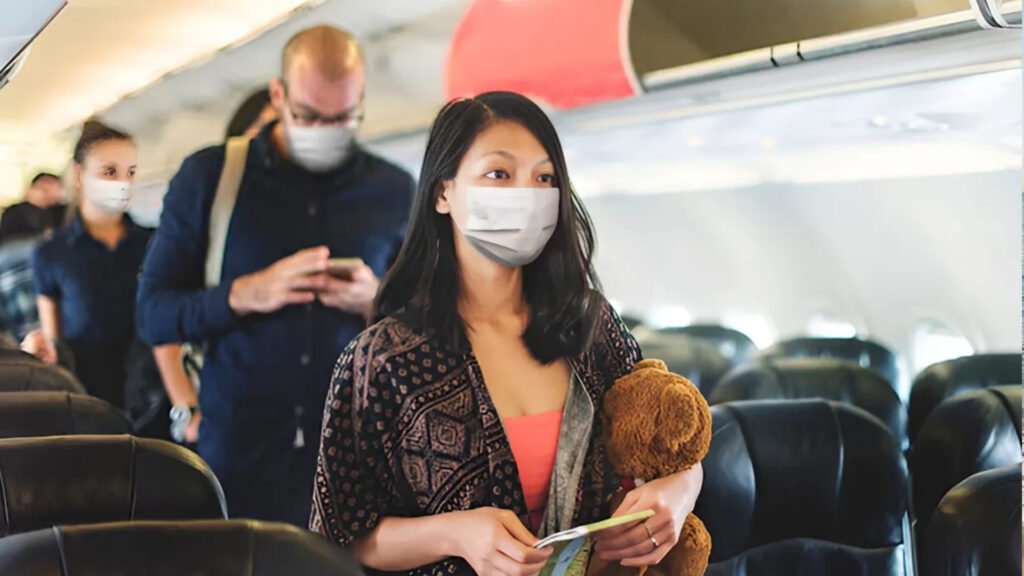Securing the Skies: Strategies for Passenger Safety in Conflict Zones

Mitigating Risks in Conflict Zones: Strategies for Airline Passenger Safety
In today’s interconnected world, airlines navigate an increasingly complex web of challenges to ensure passenger safety. For individuals aspiring to enter the aviation, hospitality, or retail industries, understanding how airlines mitigate risks in conflict zones provides a vital perspective on the importance of safety protocols, regulations, and advanced technologies. If you’re considering aviation courses after 12th or exploring careers in airline management, this blog offers valuable insights into the measures taken to protect passengers in high-risk areas.
Understanding the Threat Landscape in Conflict Zones
Airline safety risks have evolved due to geopolitical threats, terrorism in aviation, and unpredictable security challenges in conflict zones. Airlines operating in these areas face significant threats that require robust mitigation strategies. Geopolitical tensions can disrupt air travel routes, while terrorism remains a critical concern for aviation security professionals.
Students pursuing vocational education courses like aviation and hospitality management learn about risk management and the dynamic nature of airline operations. Understanding the global context is essential for professionals who want to contribute to making air travel safer.
Key Strategies for Ensuring Passenger Safety in High-Risk Areas
To address the risks associated with conflict zones, airlines adopt comprehensive passenger safety strategies. These include:
Risk Assessment: Regular evaluations of flight paths and surrounding regions ensure that airlines avoid high-risk zones whenever possible.
Conflict Zone Operations: Advanced planning, real-time monitoring, and swift adaptability allow airlines to respond to emerging threats effectively.
Aviation Security Protocols: Measures like enhanced screening procedures and onboard security measures reduce vulnerabilities.
Emergency Response Plans: Detailed contingency plans enable swift action in emergencies, safeguarding both passengers and crew members.
If you’re pursuing air hostess training institute courses, these strategies are integral to understanding how to handle high-stakes scenarios effectively.
The Role of International Regulations and Guidelines in Airline Safety
Compliance with international aviation regulations is paramount for ensuring safety in conflict zones. Organizations like the International Civil Aviation Organization (ICAO) provide guidelines for safety standards in high-risk areas.
Key elements of these regulations include:
ICAO Guidelines: These outline global best practices for airlines operating in or near conflict zones.
Safety Standards: Airlines must comply with stringent safety requirements to mitigate risks effectively.
Compliance Measures: Regular audits and inspections ensure adherence to international standards.
Aspiring aviation professionals studying hospitality administration courses or aviation courses after 12th gain a thorough understanding of these regulatory frameworks during their training.
Advanced Technologies Enhancing Airline Security Measures
Technology plays a pivotal role in strengthening aviation security. Advanced aviation technology solutions include:
Surveillance Systems: High-tech monitoring ensures real-time updates about threats.
Biometric Security Measures: Enhanced passenger identification methods improve security.
Threat Detection Technology: Tools such as AI-based systems and predictive analytics identify risks proactively.
For students interested in vocational training courses focused on aviation, these technological advancements represent exciting opportunities to contribute to the future of airline safety


The Importance of Crew Training and Awareness in Conflict Zones
Crew members are the frontline defenders of passenger safety in high-risk situations. Airlines invest heavily in:
Crew Training Programs: These include rigorous protocols to prepare crew members for emergencies.
Situational Awareness Training: Crew members learn to identify and respond to potential threats swiftly.
Crisis Management Training: Equipping flight crews with the skills to manage crises ensures calm and effective responses.
For those enrolled in air hostess education fees programs, these training elements form the foundation of professional expertise.
Collaboration with Government and Military Entities for Enhanced Security
Airlines often collaborate with government and military entities to enhance security measures. Public-private partnerships in aviation security facilitate:
Government Collaboration Strategies: Airlines work closely with government agencies to ensure compliance and share critical intelligence.
Military Support for Airlines: In conflict zones, military assistance can provide additional protection and resources.
Understanding these collaborations is crucial for students studying hospitality and tourism management or related fields.
User Education: Informing Passengers about Travel Risks and Precautions
Educating passengers is another critical component of mitigating risks in conflict zones. Informational campaigns and pre-flight briefings ensure that passengers are aware of potential risks and necessary precautions.
Key initiatives include:
Passenger Education on Travel Safety Risks: Airlines provide detailed information about the safety measures in place.
Informational Campaigns on Airline Travel Safety: These campaigns build trust and awareness among travelers.
Pre-Flight Passenger Briefings: Comprehensive briefings help passengers stay informed and prepared.
For aspiring professionals enrolled in hospitality courses or vocational courses, passenger education is an essential skill to master.
Conclusion: Committing to Continuous Improvement in Passenger Safety Amidst Global Conflicts
The aviation industry’s commitment to passenger safety is unwavering, even amidst global conflicts. By combining robust strategies, advanced technologies, and comprehensive training, airlines continue to mitigate risks effectively. For students pursuing aviation courses, vocational training courses, or hospitality management courses, understanding these measures highlights the industry’s dedication to safety and innovation.
At IAHR, we prepare our students to excel in high-demand sectors like aviation, hospitality, and retail by offering courses such as air hostess training, hospitality and tourism management, and vocational education courses. Whether you’re interested in exploring courses in hotel management after 12th or seeking a career in aviation, our programs are designed to equip you with the skills and knowledge necessary for success.
Take the first step toward a rewarding career with IAHR. Explore our range of good courses after 12th, and join us in shaping the future of global industries.

